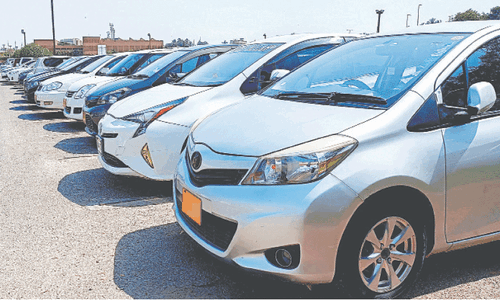Who benefits more?

SINCE being officially launched by President Xi in April 2015, the China-Pakistan Economic Corridor (CPEC) has attracted some $25 billion investment into Pakistan’s roads, ports, power plants and fibre optic cables. Given the power imbalance between China and Pakistan and also Beijing’s reputation for an unswerving focus on its own national interests, it’s been widely assumed that China was always going to secure the most benefits.
In some respects, it has. The terms of specific deals have been so beneficial to China that Pakistan will face a major challenge repaying the debts it is amassing. Not only that, in some cases China has apparently even brought in its own prisoners as a workforce rather than providing Pakistanis with much-needed jobs.
Read: CPEC 2.0 — the promise and the peril
But a major new study by the Carnegie Endowment for International Peace has suggested that Pakistan has also enjoyed some success in securing its objectives in relation to CPEC. Perhaps it should not be such a surprise. After all, for many decades Pakistan has outmanoeuvred successive US administrations, securing huge quantities of aid whilst not changing its national security policies of building a nuclear bomb and supporting pro-state violent jihadists. The Carnegie report suggests that China too has discovered that when you deal with Pakistan, it’s not all one-way traffic.
When CPEC first got underway, Nawaz Sharif wanted China to focus on the energy projects which had been a key feature of his 2013 election manifesto. To some extent this suited Beijing too. After all, if it was to relocate factories to Pakistan, it would need energy to supply them. But Carnegie found that the minutes of the Joint Cooperation Committee which oversaw CPEC clearly indicated that the early focus on energy projects was initiated by the Sharif government. In part because it wanted to secure political support for the whole initiative, China agreed to these priorities and many of the early CPEC investments went to energy projects, most notably coal power plants.
It’s not all one-way traffic when it comes to CPEC.
The Pakistani government also exerted influence over decisions about which locations would benefit from Chinese investment. Whilst Nawaz Sharif was in power, many major projects were steered towards his political heartland of Punjab. Khyber Pakhtunkhwa meanwhile missed out. This to some extent suited the Chinese who saw great development potential in Punjab in part because it was cheaper to work in a province with a road network of sorts already in place.
The tendency of Pakistan governments — of all stripes — to steer resources in the direction of their voters came into still clearer focus when the PTI took over. Unhappy that Punjab was getting so much of the benefit, Imran Khan was for many years, critical of CPEC. In fact, his opposition was so marked that China had to rely on the Pakistan military to bring the new PTI government into line on the issue. The army chief reportedly intervened telling the government that CPEC had to be backed. And once it had taken that message on board, the PTI government proved just as skilful as the PML-N when it came to directing resources: in the face of Pakistani government pressure, China abandoned its preference for the Hattar industrial park and agreed to develop Rashakai even though feasibility studies had not given the site a high rating. Interestingly though, the Chinese, having convinced themselves that Imran Khan had indeed decided to back CPEC, were happy to keep working with civilian as opposed to military officials.
And what of the CPEC’s jewel in the crown, Gwadar? It is often said that the deep-sea port has only been constructed because of China’s desire to secure access to the Indian Ocean. While that is undoubtedly an important factor, it is also true that Gwadar has been a priority for Pakistan which has long thought the port had the potential to give it an edge in its never-ending contest with India. Indeed, the first proposal to develop Gwadar was put forward not by Beijing but by then Pakistani president Gen Pervez Musharraf during his first visit to China in January 2000.
When CPEC got underway, Gwadar was to some extent rebranded as a Belt and Road Initiative project. Although China paid lip service to backing Gwadar in these early years, the money only really began to flow when CPEC fell into place. In the early days, China worried that the disadvantages in the form of the port’s remote location, the lack of supporting infrastructure and the challenges posed by the Baloch separatist movement outweighed any potential benefits.
The experience of Pakistan demonstrates that it is possible to secure domestic political benefits from CPEC investments. Having said that, it is also possible to wrack up massive debts which will take decades to repay. And when it comes to those debts, Pakistan may want to consider that China may be a less sympathetic creditor than the West.
The writer is author of The Bhutto Dynasty: The Struggle for Power in Pakistan.
Published in Dawn, August 3rd, 2021


































